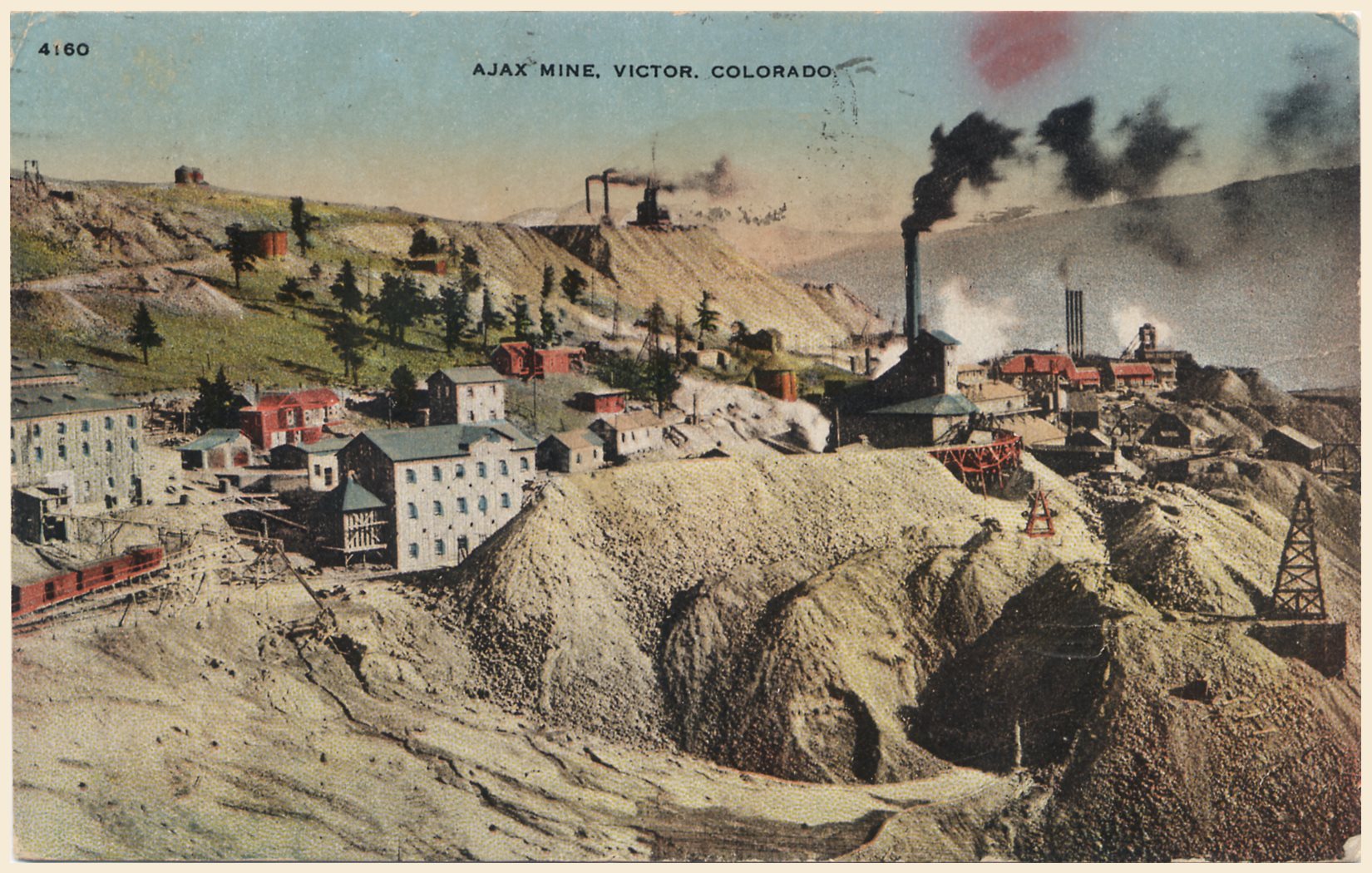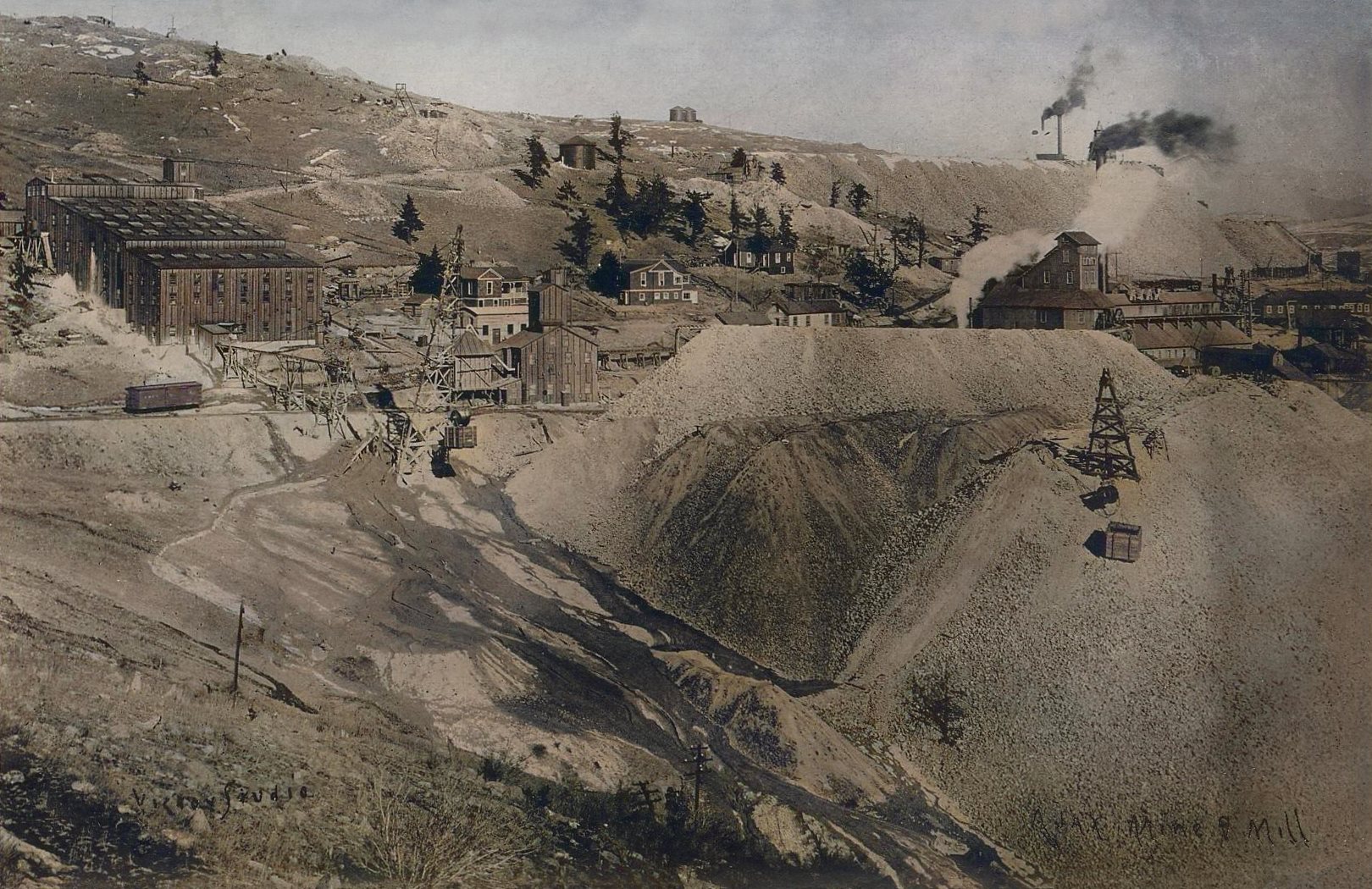-> HathiTrust Digital Library Site; Link to First Page.
Source had no pics, only text, so I added from my collection.
The latest development in the local treatment of ore at Cripple Creek is the decision of Mr. E. A. Colburn, principal owner of the Ajax mine, to erect a mill embodying the much discussed Clancy cyanide process. This will be the first commercial application of the Clancy principles and the outcome will be awaited with great interest.
Metallurgists generally are favorably impressed with the principles of the process and earnestly hope that the first installation will successfully meet the prime requisite of making money.
The Colburn mill, as it is to be known, is being erected near the Ajax shaft, above the town of Victor. Both mine and dump ore will be treated. The plant will comprise two principal buildings, one for crushing and sampling and the other for cyanide treatment.
The excavations have been made, concrete foundations put in and it is expected that the plant will be in operation this summer, probably in June.
An aerial cableway will be installed for transporting ore from the dump to the sampler, while mine ore will be delivered from the shaft by electric tramway. The sampler will have a capacity of 100 tons in eight hours and will have to be run two shifts to supply the cyanide plant, the capacity of which will be 200 tons in 24 hours.
The sampler will be arranged for the separate treatment of leasers' and company ore. Coarse crushing will be done in a Symons gyratory, the product from which will be elevated and diverted to steel bins. One of the latter will be a scale hopper bin for leasers' ore and the other an ordinary bin for company use. From these bins the ore will be elevated to the roll and screen system.
The sample will be taken by two Snyder samplers when the ore is reduced to ¼-mesh. The final roll product will be reduced to 12-mesh and elevated by belt conveyer to the cyanide plant. An exhaust dust collecting system will gather the dust from various parts of the sampler and conduct it to a settling chamber with hopper bottom, from which it can be drawn onto the conveyer belt and sent with the ore to the mill.
At the head of the cyanide mill will be three grinding and classifying units, each consisting of a storage bin for crushed ore, a classifier and a tube mill. The bins will be circular in form, built of steel, with bottoms of rock and cement sloping at an angle of 45°.
The ore will flow from the bins into the classifiers, which will be of the spiral vane form. The slime will overflow to the agitators and the sand will be ground in tube mills. The tubes will be of a shorter type than customary, 5 ft. x 16 ft., and will have El Oro lining and screw feed. They will grind in closed circuit, their discharge being returned to the classifiers.
The air agitators will be of special construction, suited to the application of electrolysis as well as of agitation. The form will be circular, with cone bottom, and the ratio of height to diameter of the circular portion will be 1:1. The central air tube will be about half the height of the tank, so that the pulp in the upper half of the tank will be thoroughly agitated by the air rising from the central tube.
The agitators will be fitted with electrodes for the application of the electric current during agitation, both for extraction of the gold from the ore and for regeneration of the cyanide solution. The cathode will be in the form of iron sheets suspended in the pulp around the inner periphery of the tank, and the anode of fused ferric oxide suspended near the center.
There will be five of these tanks, which will be used for storage as well as for agitation.
The Moore vacuum filtration system will be used. On account of the location of the mill with respect to the town of Victor and adjacent mining property it will not be possible to discharge the slime tailing by sluicing. An automatic system of stacking the tailing on the dump is now being worked out whereby the tailing will be removed from the Moore tank by a screw conveyer and delivered into a hopper.
From the hopper it will be carried by bucket tramway to the dump. It is planned to make the loading and dumping automatic and to have the bucket dump at a series of different points on successive trips.
The Merrill system of zinc dust precipitation will be installed and the gold refined at the mill.
The plans contemplate a mill as nearly automatic in operation as possible, with a minimum labor requirement. It is expected that two men for each of two shifts in the sampler and two for each of three shifts in the mill, in addition to the superintendent and chemist, will be sufficient.
The mill design and construction is under the direction of S. A. Worcester and the metallurgical details are being worked out by A. W. Warwick.

Ajax Mine, Victor, Colorado.
Photo by: Julia Skolas

_ajax-mill_twstd-colored.jpg)